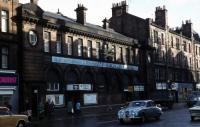Glasgow City and District Railway
Introduction
This line is open. This line was built to connect together lines in the west and the east of Glasgow and serve central Glasgow with new stations. The line runs mostly in tunnels built using the cut and cover method of construction. It provided an alternative route for North British Railway trains which were mostly used the Queen Street station High Level terminus until this line opened; leading to capacity problems. The line is electrified. The name was the City and District Railway, with the prefix 'Glasgow' added to indicate the city.
Why built
With increasing traffic to Glasgow from the west Glasgow Queen Street High Level was increasingly becoming an unsuitable terminus due to the difficulties of operating the Cowlairs Incline and the low capacity of the terminus. A new terminus in the west of the city centre was proposed and the plan revised several times before the new cross-city underground line was settled on.
Dates
Portions of line and locations
This line is divided into a number of portions.
Kinightswood Curve
This is a single lead junction where the double track line between Westerton station and Anniesland is met by a single track from Cowlairs West Junction, this doubling shortly after the junction going east. (The junction has been converted into a single lead junction.) It is located just north of the Forth and Clyde Canal.
...
See also
Glasgow, Dumbarton and Helensburgh Railway
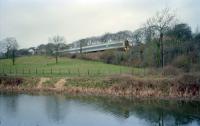
Ewan Crawford //1994
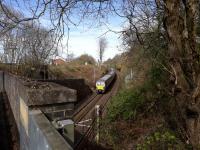
Rod Crawford 12/04/2020
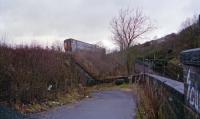
Ewan Crawford //1994
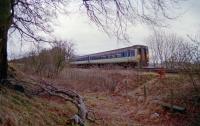
Ewan Crawford //1994
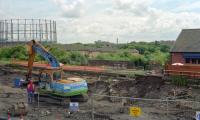
Ewan Crawford //1998
This junction is to the north of Anniesland station. To the east the original line, the Stobcross Railway of 1874 runs to Maryhill Park Junction, just west of Maryhill. This closed in 1980 and reopened in 2005.
...
See also
Stobcross Railway
Cowdenhill Branch (North British Railway)
Skaterigg Branch (North British Railway)
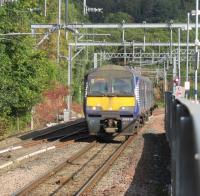
David Panton 19/09/2020
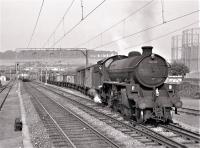
Robin McGregor 21/09/1963
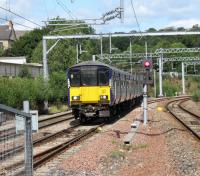
David Panton 25/08/2018
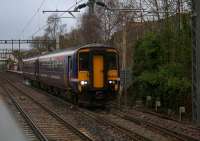
Colin McDonald 28/01/2016
Hyndland Terminus
Opened with the Hyndland [1st] branch of the Glasgow City and District Railway.
...
See also
Stobcross Railway
This EMU depot opened on the northern part of site of Hyndland [1st] station in 1960. The station was able to remain open while the depot was established. ...
More details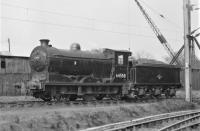
Robin McGregor 09/04/1963
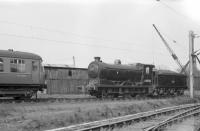
Robin McGregor 09/04/1963
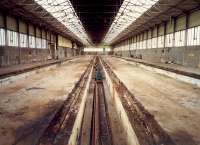
Ewan Crawford //1988
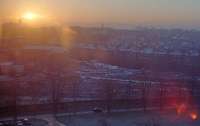
Ewan Crawford //1991
This was a terminal station with an island platform and goods sidings. A fine terminus building stood in Hyndland Road, now gone, the site now being Station Gardens. The platform was canopied with a footbridge to the platform from Novar Drive.
...
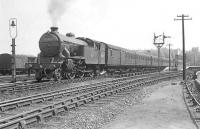
G H Robin collection by courtesy of the Mitchell Library, Glasgow 07/08/1957
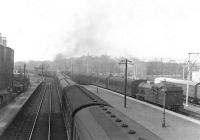
G H Robin collection by courtesy of the Mitchell Library, Glasgow 30/04/1960
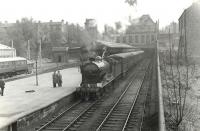
G H Robin collection by courtesy of the Mitchell Library, Glasgow 30/04/1960
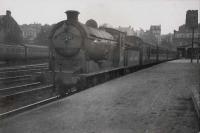
G H Robin collection by courtesy of the Mitchell Library, Glasgow 22/07/1949
Finnieston to High Street
This was the junction between the approach to the northern half of Stobcross Goods [NBR] (one of the terminii of the Stobcross Railway) and the line to Glasgow Queen Street Low Level (Glasgow City and District Railway).
...
See also
Stobcross Railway
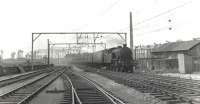
G H Robin collection by courtesy of the Mitchell Library, Glasgow 14/07/1961
This was a two platform station located in a dressed stone cutting on the south side of Argyle Street on which was the station surface two storey building and entrance. The platforms were canopied. Stairways ran up to a footbridge with access from Argyle Street.
...
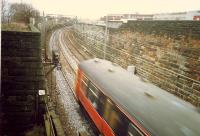
Ewan Crawford //1988
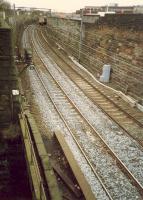
Ewan Crawford //1988
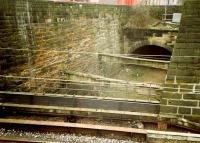
Ewan Crawford //1988

Ewan Crawford //
This is a two platform station. The station is almost entirely underground, but is open at the west end. Ticket offices are at ground level with platforms below.
...
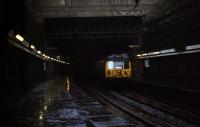
John Clark /01/1980
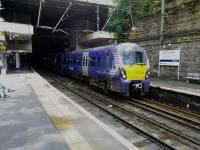
David Panton 05/08/2017
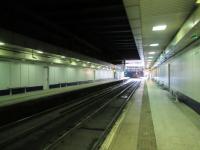
David Panton 01/12/2018
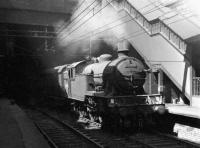
...
Robin McGregor /07/1961
This is a two platform station beneath Glasgow Queen Street High Level. Trains at the high level station can be heard arriving and departing from below.
...
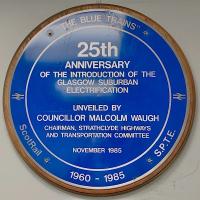
Colin McDonald 11/02/2020
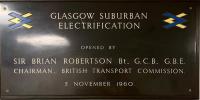
Colin McDonald 11/02/2020
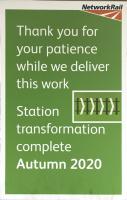
Colin McDonald 10/02/2018
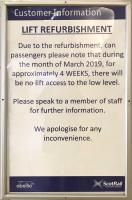
Colin McDonald 21/02/2019
This is a double track tunnel between Glasgow Queen Street Low Level, to the west, and High Street. The tunnel is 681 yds long.
...
This is a two platform station located in a dressed stone cutting with a street level ticket office.
...
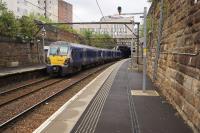
John McIntyre 14/08/2021
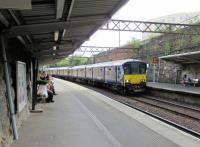
David Panton 24/08/2019

David Panton 05/08/2017
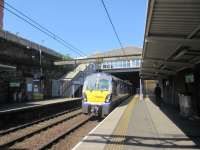
Alastair McLellan 09/05/2016
This junction was immediately east of High Street station and visible from the east end of the platforms.
...

David Panton /07/1997
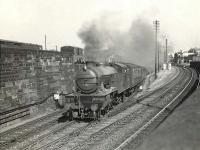
G H Robin collection by courtesy of the Mitchell Library, Glasgow 10/07/1957
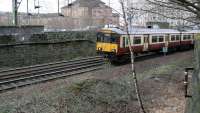
Colin McDonald 03/02/2015
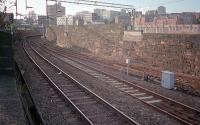
Ewan Crawford //1987
This junction was at the east end of the Glasgow City and District Railway where it joined the Glasgow and Coatbridge Branch (North British Railway).
...
See also
Glasgow and Coatbridge Branch (North British Railway)
Bridgeton Branch
Also known as the North British Railway's Bridgeton Cross Extension.
This junction was immediately east of High Street station and visible from the east end of the platforms.
...

David Panton /07/1997

G H Robin collection by courtesy of the Mitchell Library, Glasgow 10/07/1957

Colin McDonald 03/02/2015

Ewan Crawford //1987
This double track tunnel is 220 yds long. It is no longer in use. It carried the line from Bridgeton Central Junction at High Street station to Bridgeton Cross South Junction (Gallowgate Junction). Also known as Ladywell Tunnel, Ladywell Barrack Street Tunnel or (incorrectly) as Barrack Street Tunnel. (The latter name refers to the Glasgow and South Western Railway tunnel between [[St ...
More details
Colin Harkins 29/03/2007
This junction opened in 1893 with the construction of a curve (1893) from St Johns Junction on the City of Glasgow Union Railway to meet the Glasgow City and District Railway (1892) line to Bridgeton Central. Also known as Gallowgate Central Junction.
...
See also
City of Glasgow Union Railway
This was a two platform station to the south of Bridgeton Cross South Junction. The station was in a deep dressed stone cutting.
...

Colin Harkins 29/03/2007
This is a disused double track tunnel of 220 yds. The tunnel is between the former Bridgeton Central station (south) and former Gallowgate Central station (north).
...
This was a terminus of a short branch from High Street station, providing a useful terminus in the east of the city, rather than have trains terminate (and block platforms) at Glasgow Queen Street Low Level. It was generally known as Bridgeton Central. The station consisted of two terminal island platforms, both with glazed canopies - originally a trainshed which covered both platforms. ...
More details
Colin Harkins 27/03/2007
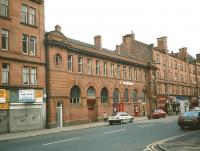
David Panton 25/11/1997

Colin Harkins 27/03/2007




















